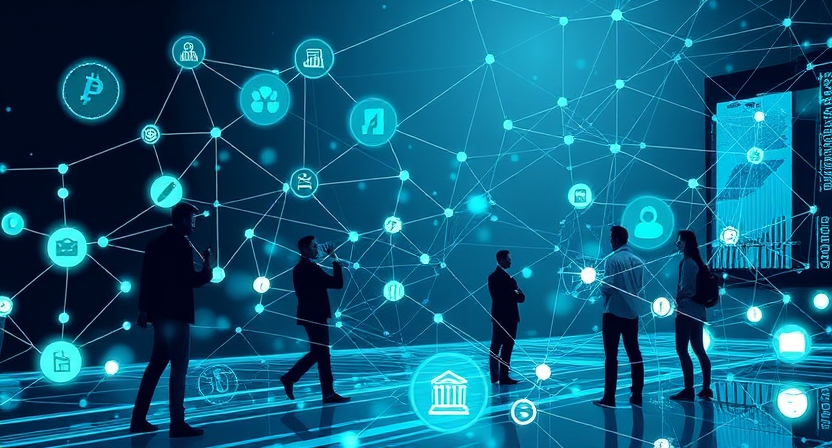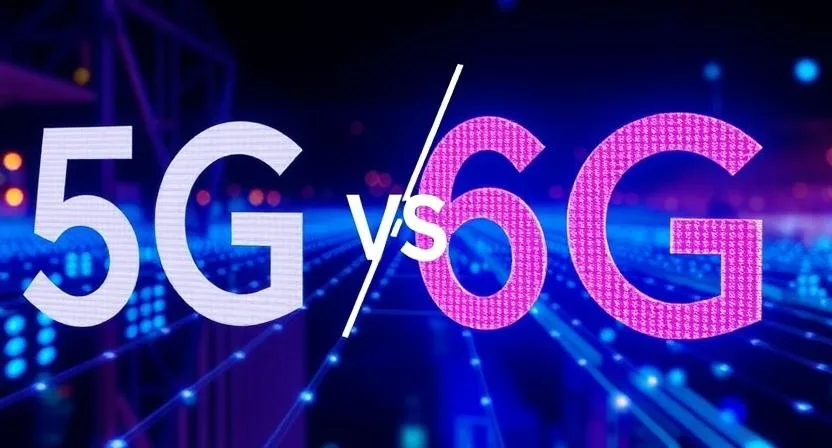Web3 and blockchain are currently the most popular topics in the rapidly evolving world of technology. Once mere buzzwords, these two technologies are transforming the way we conceptualize the internet, finance, and ownership assets. So what does 2025 hold for Web3 and BC? Here are some of the most promising trends, challenges, and opportunities we can look forward to.
Here at Gizoasis, we are passionate about following blockchain progress. This blog article will explain what to expect.! DeFi, NFTs, and all that good stuff to come.
What Is Web3 and Why Should We Care?

Before diving into the future, it would be best to review what Web3 actually means. In summary, Web3 is the internet of the future. It’s about building an internet where users have more control over their data, their assets, and their interactions. Web3 wants to give people control over their data, unlike Facebook and Google.
A user-control system needs blockchain. Blockchain ensures transparency, security, and decentralization—essential elements for a Web3 environment. Without it, users wouldn’t have the autonomy over their data and assets that Web3 promises.
.It is the technology behind Web3 that facilitates transparency, security, and permanence of the data. But how does it work?
Where Is Web3 and blockchain Heading In 2025?

Blockchain has matured significantly and will be far more impactful for industries by 2025. It‘s going to find its way in decentralized finance and digital identity management. The following are the trends and innovations that will characterize blockchain by 2025:.
Looking ahead to 2025, it is evident that Web3 and blockchain will persist in creating significant waves across various sectors. Here are some of the key trends and innovations to expect:
1. The Decentralized Finance (DeFi) Boom is On
If you do not know about DeFi, then you will certainly know about it in the next few years. DeFi is a set of blockchain-based virtual finance services without banks or financial firms. In 2025, anticipated advancements to DeFi protocols will include services such as decentralised lending, borrowing, and insurance.
The best part? DeFi will be more affordable and simpler to use, helping those left out of the global economy because of inadequate banking.
2. Non-Fungible Tokens Go Beyond The Realm of Digital Art and Sor Collectibles
Recently, NFTs (non-fungible tokens) have captured investors’ imagination, especially in the sector of arts and collectables; however, this trend is set to change by the year 2025, when NFTs will be much more embedded in our lives. There is more; we are talking about using NFTs to tokenize items in the real world, including but not limited to real estate, luxury goods, and even intellectual properties.
Remember buying property with NFT or attending an exclusive event with NFT tickets. By 2025, NFTs will continue to evolve as tools for creators and companies to communicate with audiences in new ways.
3. Blockchain Technology as a Fundamental Building Block to a Digital Identity
In the world today, where any personal data can be in jeopardy, managing using blockchain-powered technology will surely classify as epic. In 2025, one may expect to have blockchain-kind solutions that replace intermediaries and allow to securely prove one’s identity with more control over their personal data.
With Web3 technology, we are expecting identity platforms that are decentralized, meaning there won’t be a third party in order to confirm one’s online identity for, say, financial, social, or medical purposes.
Going Forward: What Problems Need to Be Addressed?
Whereas Web3 and blockchain promise great prospects, there are still some improvements that need to be made before the technologies can be widely adopted in 2025. Let’s look at some of the challenges:
1. Overarching Scalability Problems
There are blockchain networks such as proof of work (PoW), which can present some issues with scaling. With the increasing adoption and use of Web3 and blockchain technologies, there is bound to be an increase in the volume of transactions. The good news is that sharding and Layer 2 technologies are some of the solutions which are already in place to tackle these challenges.
By the year 2025, blockchain networks that are fast and more productive will be witnessed to manage the huge scale necessary for universal acceptance.
2. Regulatory Uncertainty
While this would be much needed to bring clarity, it also creates the question of privacy, security, and if such increased regulation does not make the decentralized networks compromise on their openness and permissionlessness.
3. Environmental Concern
It’s not great for the environment, especially considering that some of these consensus methods, like Proof of Work, are pretty energy-hungry. But again, a move to Proof of Stake (PoS) systems, such as what Ethereum is doing, is already greening up blockchain quite a bit. We’ll see more and more sustainable blockchain setups that minimize energy use while maintaining security and decentralization by 2025.
Business Opportunities in Web3 and Blockchain.

Web3 and blockchain offer a lot of opportunities for forward-looking businesses. Here are some ways that companies may benefit from these technologies in 2025:
Tokenizing Real-World Assets: There will be an increasing move to tokenise physical and digital assets; therefore, businesses will look toward fractional ownership, making new business models possible in areas such as real estate, entertainment, and finance.
Smart Contracts and Automation: In smart contracts, automation of processes shall be possible, minimizing the need for intermediaries while increasing efficiency. Whether it’s automating the management of a supply chain or securing intellectual property, blockchain-enabled smart contracts will form an essential aspect of the business world.
Decentralized apps (dApps): Web3 allows enterprises to create decentralized apps on blockchain networks. Compared to traditional applications, dApps provide more information and security, attracting consumers who value privacy and data control.
Conclusion: The Future is Decentralized in Web3 and blockchain
Looking toward 2025, it’s evident that Web3 and blockchain will significantly reshape the digital world. With increasing growth in DeFi, expansion of NFTs, and growth in decentralized identity solutions, we are moving closer to making the internet more secure, transparent, and user-controlled. But again, there is so much to overcome – scalability issues, regulatory compliance, and ecological issues.
At Gizoasis, we’re super pumped to keep up with all these changes and help you stay in the loop. Whether you’re an organization researching blockchain or someone who loves technology exploring Web3. We provide you with the most recent information to navigate this exciting new digital world.







